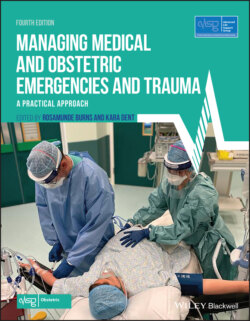Читать книгу Managing Medical and Obstetric Emergencies and Trauma - Группа авторов - Страница 75
Awareness of error traps
ОглавлениеHumans are prone to several ‘cognitive biases’ (examples include normalcy, confirmation, conformity and fixation biases). Normalcy bias is the tendency to underestimate both the seriousness of a situation and the likelihood of a poor outcome – i.e. you rule out the worst‐case scenario.
Confirmation bias is also common and is the tendency to only pay attention to information that fits in with your own ‘mental model’ of the situation in hand. There is a reluctance to change one’s mind even in the presence of contradictory evidence. When this occurs, people favour information that confirms their preconceptions or hypotheses regardless of whether the information is true. This may be observed within the healthcare setting during the process of a referral or handover. An example of this might be a clinician receiving a phone call requesting them to attend the ward to review an acutely deteriorating postnatal woman. The clinician is advised that the woman has collapsed. On their way to the ward the clinician builds up a series of preconceived expectations around what they will find upon their arrival. They may even formulate a management plan whilst travelling to the scene, based upon their expectations. Once this ‘mindset’ is established it can be difficult to shift. On arrival, the clinician examines the systems affected by the presumed diagnosis. They seek to confirm their expectation of collapse due to PPH by focusing on palpating the uterine fundus at the expense of a thorough systematic assessment. They do not pick up the fact that the woman is having difficulty breathing and their preconceived ideas that this is due to PPH mean that the remainder of the assessment is completed without due attention and more as a rehearsed exercise rather than an open‐minded exploration. In this case the eventual diagnosis was pulmonary embolism which was a very late consideration in the diagnostic pathway.
Apart from thorough history and clinical assessment, using the expertise within your team by carefully listening to alternative views or challenges can minimise the effects of these cognitive biases.
